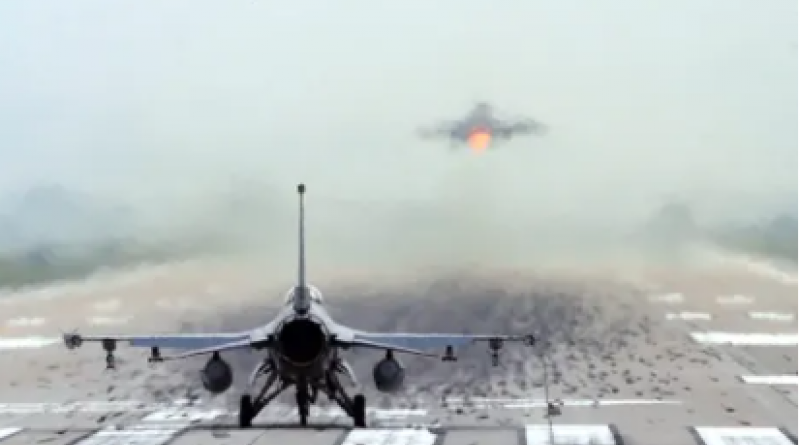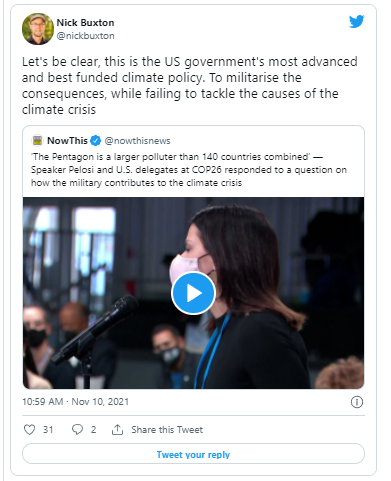World’s militaries avoiding scrutiny over emissions, scientists say

Countries do not have to include armed forces’ emissions in their targets despite estimates sector creates 6% of greenhouse gases
Armed forces are among the biggest polluters on the planet but are avoiding scrutiny because countries do not have to include their emissions in their targets, scientists say.
The world’s militaries combined, and the industries that provide their equipment, are estimated to create 6% of all global emissions, according to Scientists for Global Responsibility (SGR).
Owing to what they describe as a “large loophole” in the Paris agreement, governments are not required to provide full data on greenhouse gases being emitted by armed forces. Previously, under the Kyoto protocol, militaries were given an automatic exemption from CO2 targets, after lobbying from the US government.
Campaigners say the current situation, whereby it is only voluntary for states to include armed forces in their carbon-cutting obligations, is undermining efforts to tackle the climate crisis.
SGR’s executive director, Dr Stuart Parkinson, said that as military spending increased, the loophole continued to grow.
“Military carbon emissions matter because they are a potentially large loophole in the Paris targets – especially for the high military spenders like the US, China, UK, Russia, India, Saudi Arabia and France,” he said.
“With military spending rapidly rising, this loophole is set to grow at a time when other emissions are falling. The seriousness with how these nations deal with this issue will affect action in other sectors and in other nations.”
The Ministry of Defence says the UK military’s total annual carbon footprint is 3 million tonnes of carbon dioxide equivalent (CO2e), but SGR estimates the true figure to be 11m tonnes.
That is roughly the amount 6m average cars would emit annually. The UK-based company with the largest carbon emissions is BAE Systems, whose emissions account for about 30% of the UK arms industry’s total output.
A recent report from SGR and the Conflict and Environment Observatory estimated the carbon footprint of EU armed forces in 2019 to total 24.8m tonnes of CO2e, with France accounting for about a third of that.
Meanwhile, the US government says its armed forces emit 56m tonnes of CO2e but, while there are bigger gaps in the data, SGR estimates it to be significantly higher at 205m tonnes.
The stark figures are supported by Brown University’s Costs of War project, which in 2019 said the US military was “the largest single source of greenhouse gas emissions in the world”.
SGR said the estimates were conservative and did not include the environmental impact of fighting wars. For example, the Iraq war was responsible for 141m tonnes of carbon releases in its first four years, according to an Oil Change International report.

Parkinson added: “Many nations don’t specifically report any military carbon data. Those that do often report partial figures. So figures for military aircraft could be hidden under ‘aviation’, military tech industry under ‘industry’, military bases under ‘public buildings’, etc. Indeed, it’s not just the public who are unaware, the policymakers are also unaware, and even the researchers.”
While the issue is not on the agenda at the Cop26 climate summit in Glasgow, demonstrations have called for the UK to focus its spending on fighting climate change ahead of the armed forces.
Anya Nanning Ramamurthy, a campaigner for the Peace Pledge Union pacifist group, said: “I don’t think many people realise that military emissions aren’t included in the data. We have seen a massive increase in military spending in the UK, the largest in nearly 70 years, while we are in this climate crisis – they promise one thing, then go off and do another.”
This week a website was launched to monitor military emissions data. The Military Emissions Gap says it is dedicated to “tracking, analysing and closing the military emissions gap”.
11 November 2021
The Guardian





